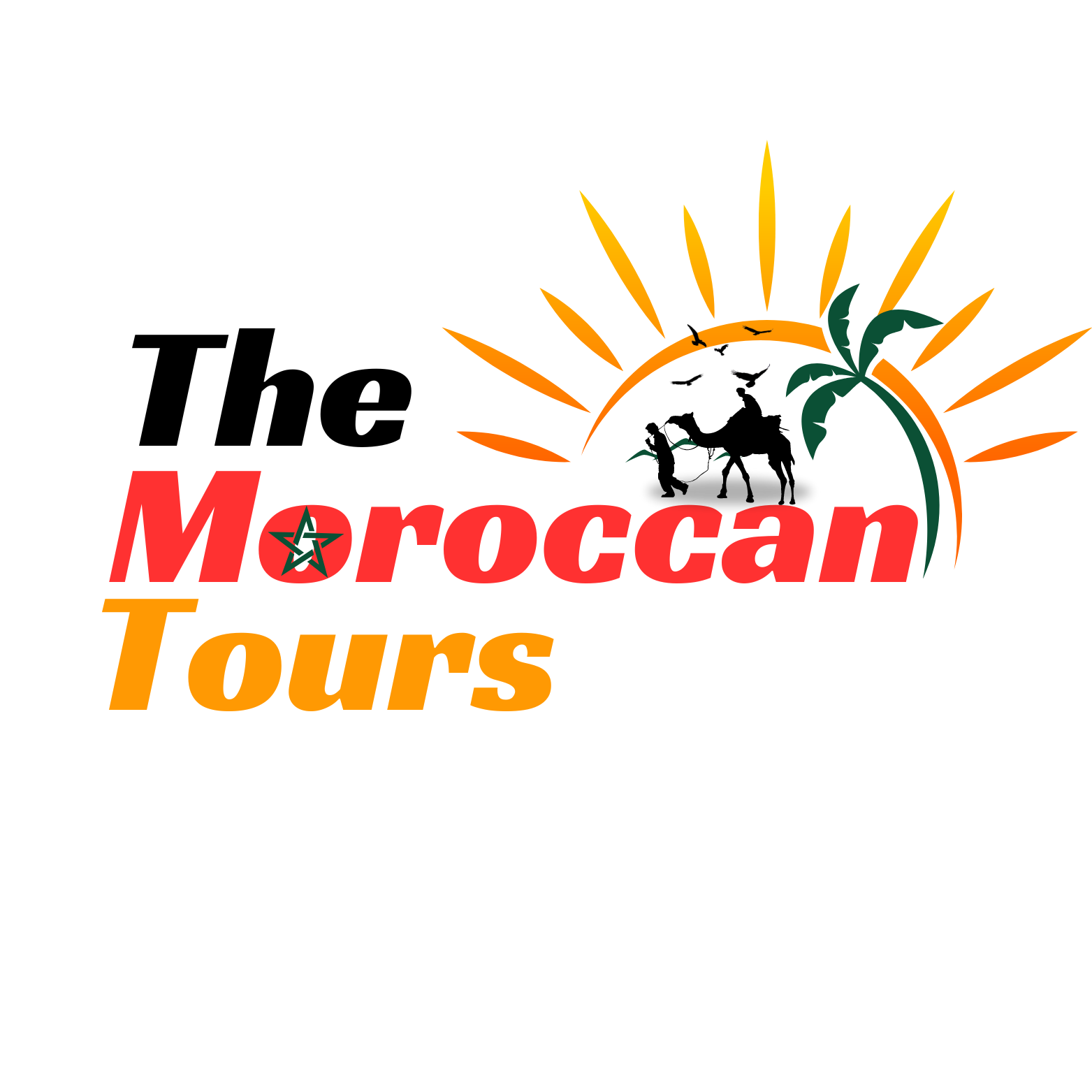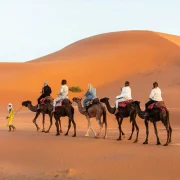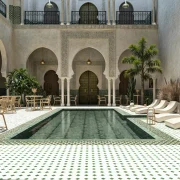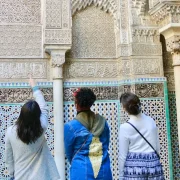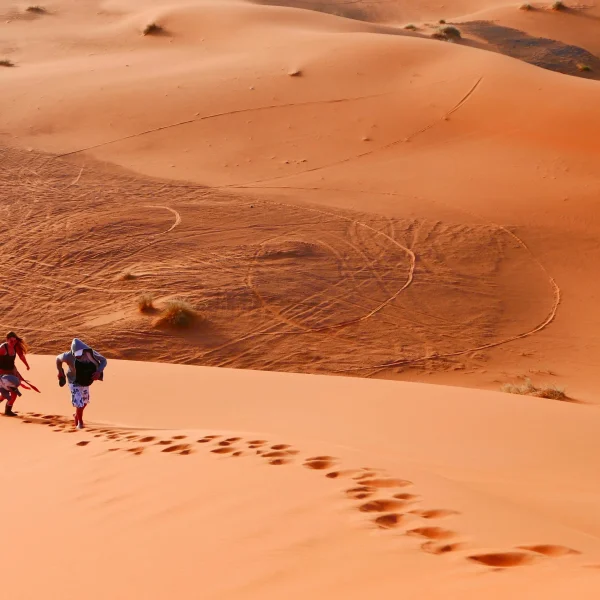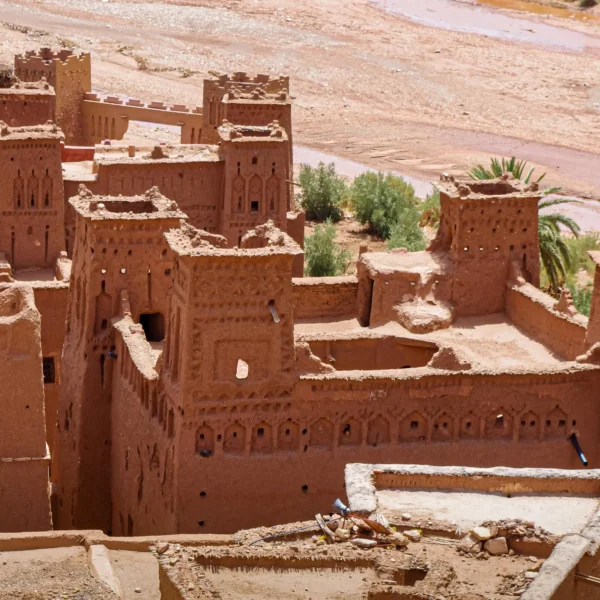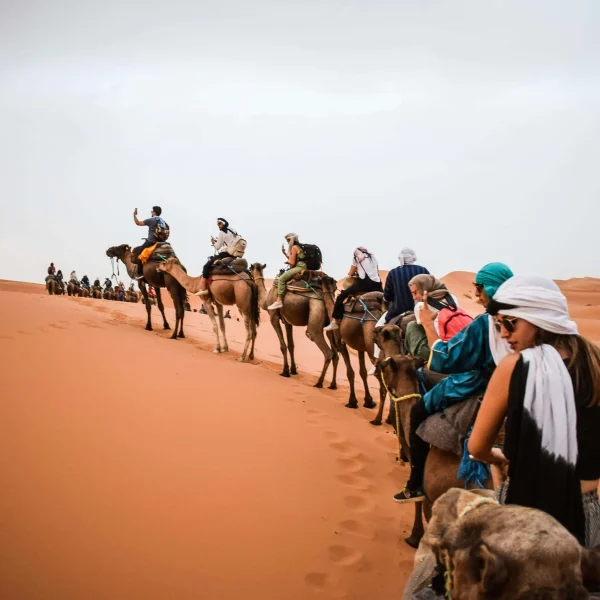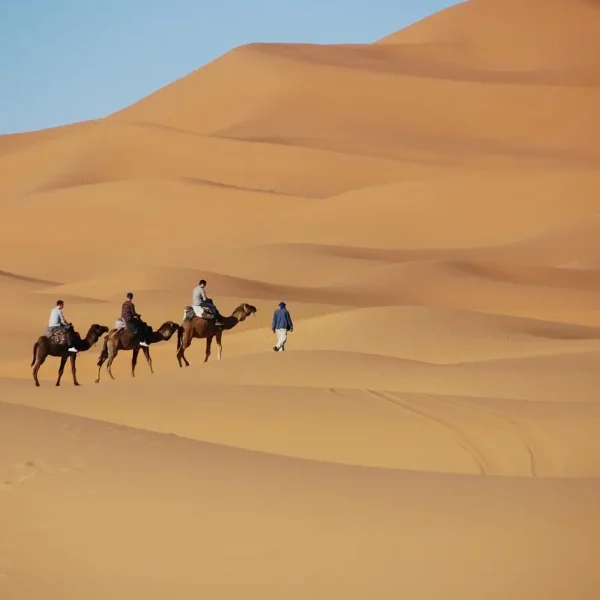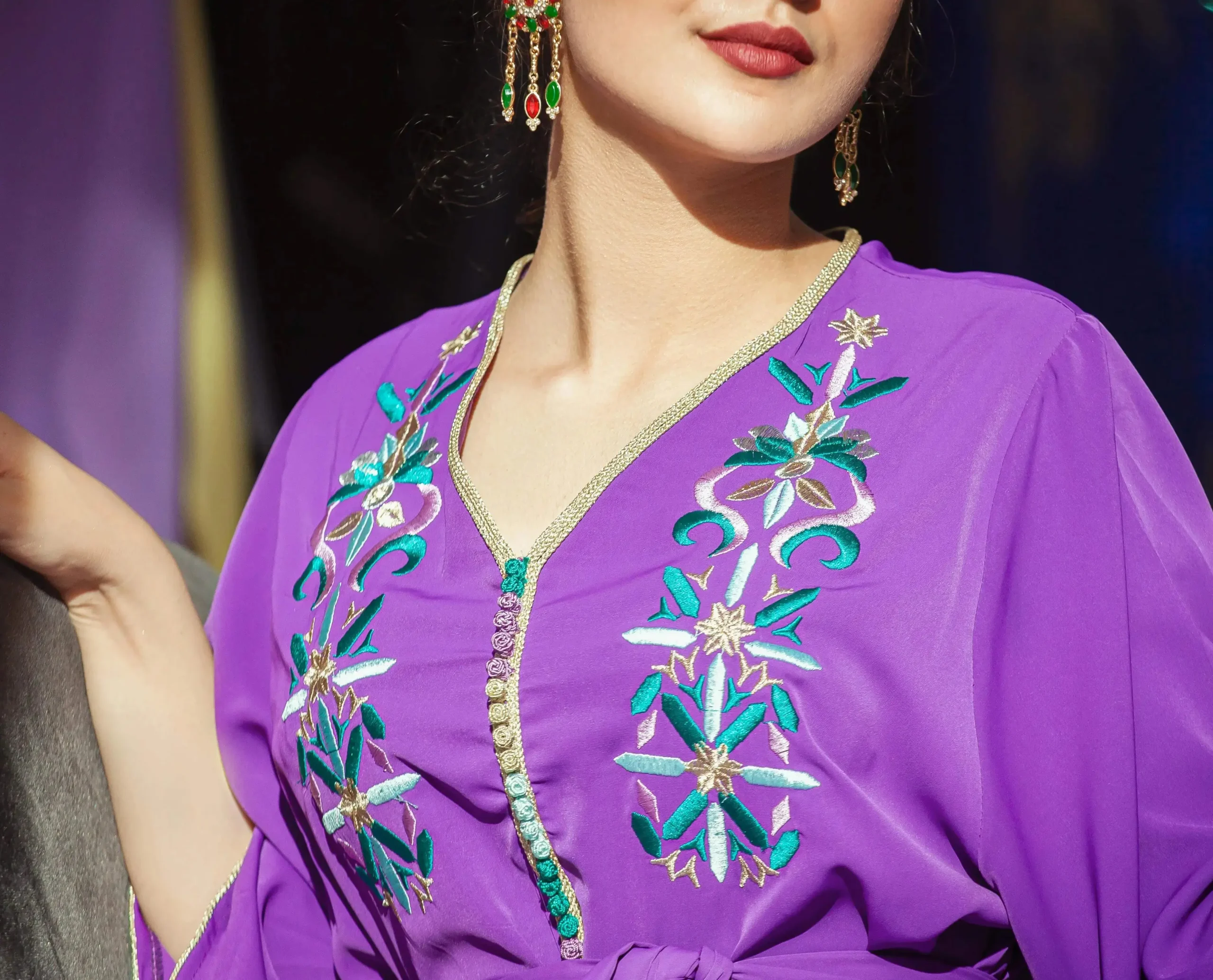
The Irresistible Allure of Moroccan Fashion: Where Heritage Meets Modern Chic
Table of Contents
ToggleThe Colorful Canvas of Moroccan Fashion
Have you ever found yourself mesmerized by the vibrant colors and intricate designs of Moroccan fashion? I certainly have! On my first trip to Marrakech, I was immediately struck by the kaleidoscope of textiles and garments that seemed to tell stories through their patterns and craftsmanship. Moroccan fashion isn’t just clothing—it’s a living museum of cultural heritage, artistic expression, and practical design that has evolved over centuries.
The allure of Moroccan fashion lies in its unique blend of functionality and artistic beauty. From the flowing caftans worn at royal celebrations to the practical djellabas seen in medina marketplaces, these garments reflect Morocco’s position as a crossroads of African, Arab, and Mediterranean influences. What makes Moroccan fashion truly special is how it manages to be both timeless and continuously evolving—much like Morocco itself.
As we explore this fascinating world together, I’ll share insights from my journeys through Morocco’s bustling souks and quiet ateliers, where ancient techniques meet contemporary vision. Whether you’re planning a Moroccan adventure or simply looking to bring some North African flair into your wardrobe, join me on this colorful journey through the threads of Moroccan fashion heritage.
“Moroccan fashion is poetry in fabric—each stitch a verse, each color a emotion, each garment a chapter in the nation’s grand cultural narrative.” — Traditional Moroccan saying
The Rich History of Moroccan Textiles and Garments
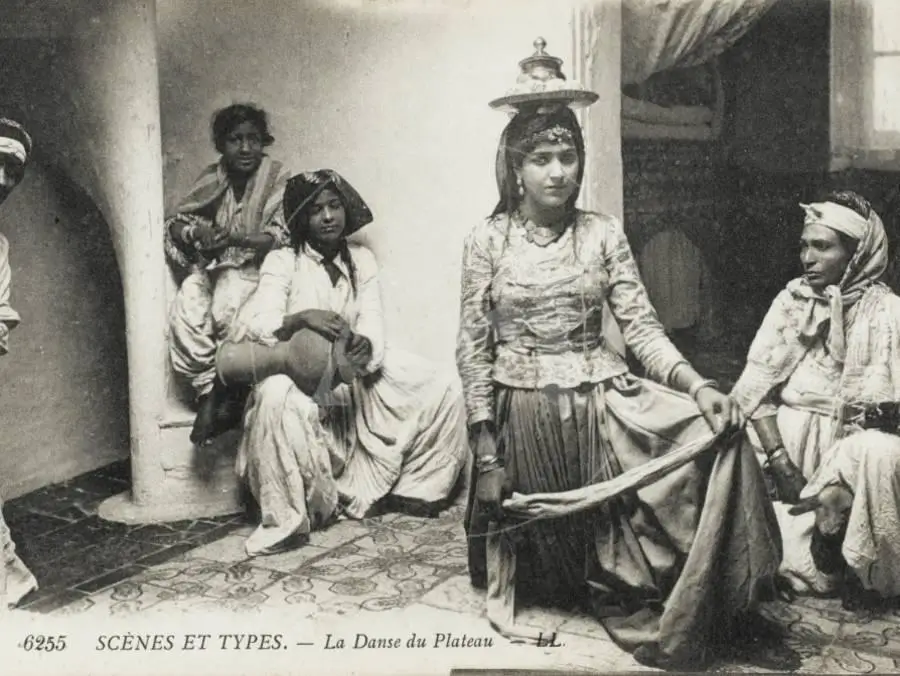
The story of Moroccan fashion is woven through thousands of years of history, with threads connecting to ancient civilizations and trading networks that once crisscrossed the Mediterranean and Sahara. To understand Moroccan fashion today, we need to take a step back in time—way back.
Ancient Roots: Berber Influence on Moroccan Fashion
Long before Morocco was even called Morocco, the indigenous Amazigh (Berber) people were creating textiles that would form the foundation of what we now recognize as Moroccan style. These earliest garments were born of necessity—crafted to withstand the harsh mountain winters and scorching desert heat.
The Berber influence remains perhaps the most distinctive element in Moroccan fashion. Their traditional weaving techniques created geometric patterns that were not just decorative but symbolic, with each motif representing everything from fertility to protection against evil. When I visited the Middle Atlas Mountains, I watched Berber women weaving rugs using techniques unchanged for generations, their fingers dancing across looms to create patterns their ancestors would instantly recognize.
The colors used in traditional Berber garments—saffron yellows, deep indigos, rusty reds—were all derived from natural dyes, extracted from local plants, minerals, and insects. This connection to the land is part of what makes Moroccan fashion so authentic and rooted in place.
The Moorish Legacy in Fabric and Design
When the Moors established their presence across North Africa and into the Iberian Peninsula between the 8th and 15th centuries, they brought with them sophisticated textile techniques and artistic sensibilities that would forever transform Moroccan fashion.
Silk brocades, intricate embroidery, and the art of passementerie (decorative trimmings) all flourished under Moorish influence. The famous Moroccan geometric patterns became more mathematically complex, reflecting the advanced understanding of geometry in the Islamic world.
What strikes me most about this period is how the marriage of Berber practicality and Moorish refinement created something entirely new yet distinctly Moroccan. You can see this heritage today in the embroidered silk caftans worn at weddings—where abstract Berber symbols might share space with Andalusian floral motifs, creating garments of breathtaking complexity and beauty.
Traditional Moroccan Garments That Define Cultural Identity
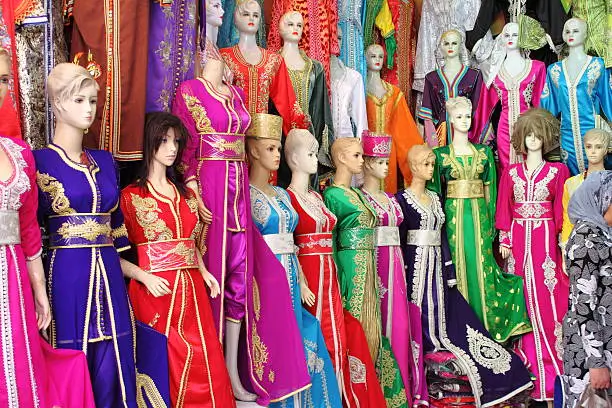
Walking through the streets of Fez or Tangier today, you’ll see a fascinating mix of Western clothing and traditional Moroccan garments. But even as Morocco embraces modernity, certain iconic pieces remain integral to cultural identity and daily life.
The Caftan: Morocco’s Iconic Ceremonial Dress
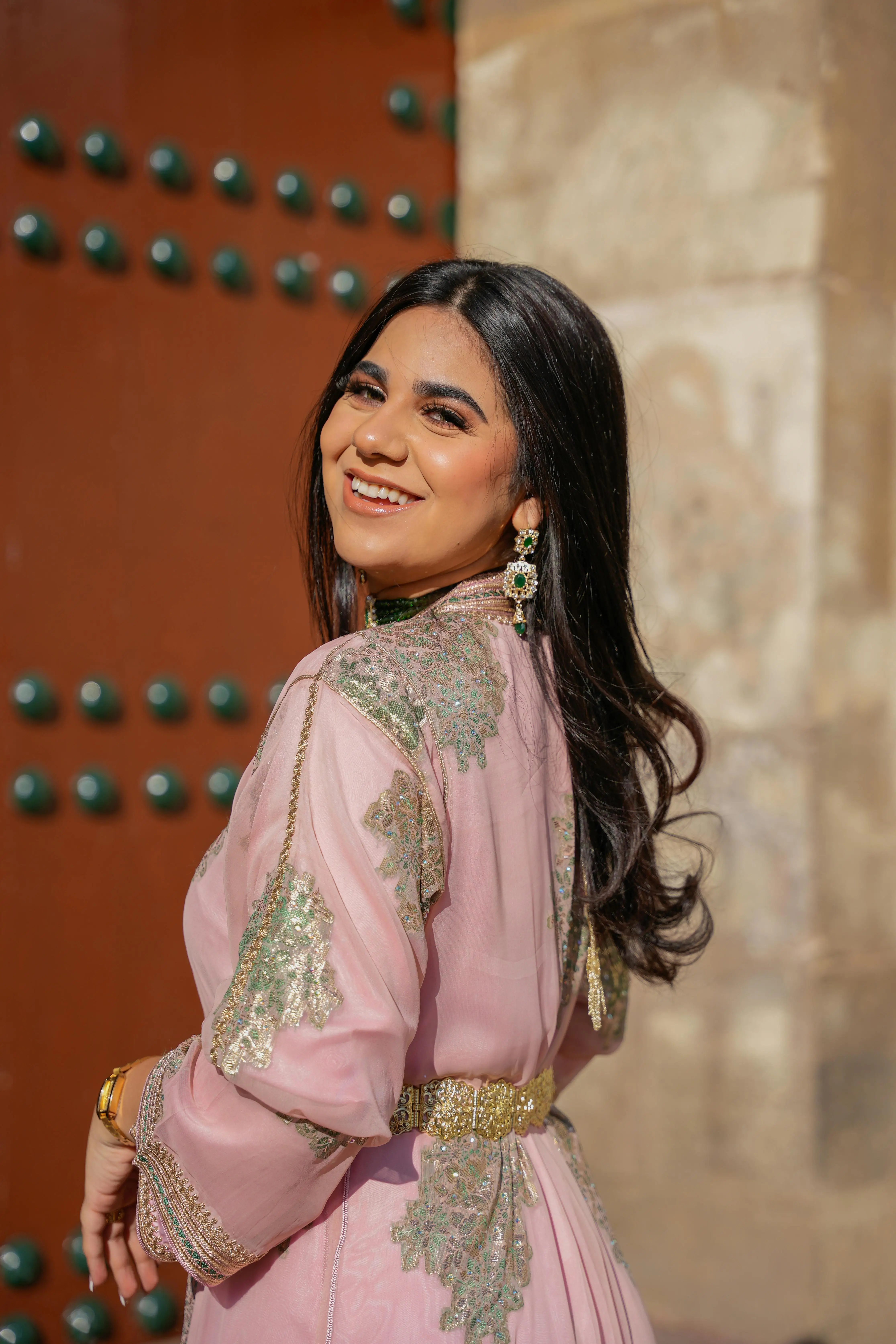
Is there any garment more synonymous with Moroccan elegance than the caftan? I don’t think so! The Moroccan caftan (or kaftan) is a long, loose-fitting robe with long sleeves that has been worn for special occasions for centuries.
What makes Moroccan caftans special is their extraordinary craftsmanship. A traditional ceremonial caftan can take months to create, involving specialized artisans for weaving, embroidery, and embellishment. These magnificent garments are often made from luxurious fabrics like silk, velvet, or brocade, and adorned with intricate handwork using gold or silver thread (a technique called “sfifa”).
While historically worn by both men and women, today the caftan is primarily associated with women’s formal attire. At a Moroccan wedding I attended in Rabat, I was awestruck by the bride’s progression of seven different caftans throughout the night, each more stunning than the last—a tradition reserved for the most special celebrations.
Djellaba and Burnous: Everyday Elegance with Purpose
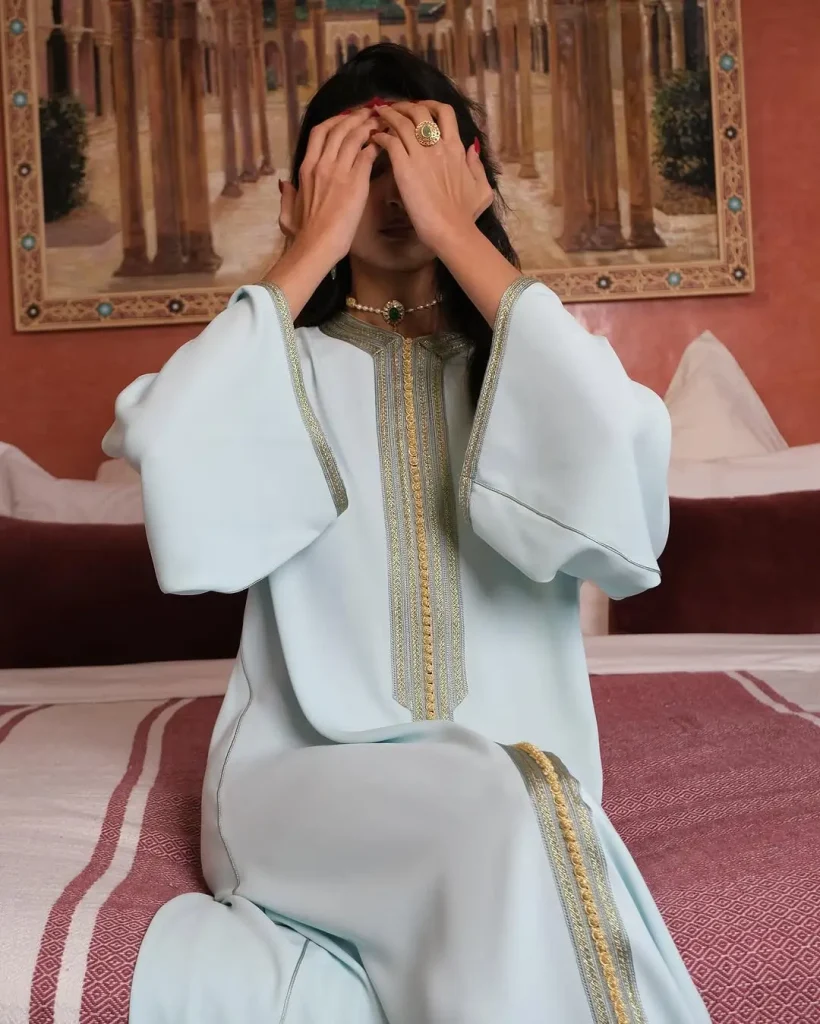
If the caftan represents ceremonial splendor, the djellaba embodies practical everyday elegance. This long, loose-fitting hooded robe is worn by both men and women across Morocco, though with subtle differences in cut and decoration.
The genius of the djellaba lies in its adaptability to Morocco’s climate—the hood (called a “qob”) provides protection from both sun and unexpected rain showers, while the loose fit allows air circulation in hot weather. Men’s djellabas tend to be simple and understated, often in neutral colors like white, brown, or gray. Women’s versions frequently incorporate more color and decorative elements.
During chilly evenings in the mountains, you might spot people wearing a burnous—a heavier, cloak-like garment similar to the djellaba but made from wool and without sleeves. It’s typically worn over other clothing and provides remarkable warmth.
The Art of Moroccan Embroidery and Embellishment

What truly elevates Moroccan garments from merely functional to extraordinarily beautiful is the embellishment techniques developed over centuries. Moroccan embroidery is a language unto itself, with regional variations that tell stories about local history and values.
Fez embroidery, for example, is known for its precision and geometric patterns, often created with silk threads on fine linen. Rabat embroidery tends toward floral motifs with a distinctive technique that creates the same design on both sides of the fabric—an incredible feat of needle artistry!
The most luxurious embellishment is certainly “terz el maalem” (master embroidery), which uses real gold thread on velvet or silk. I’ll never forget watching a master embroiderer in the Fez medina, his fingers moving with lightning speed yet absolute precision, transforming a simple piece of fabric into a work of art worth thousands of dirhams.
| Region | Embroidery Style | Distinctive Features |
|---|---|---|
| Fez | Geometric precision | Intricate patterns, often in silk on linen |
| Rabat | “Two-sided” technique | Same design appears on both sides of fabric |
| Tetouan | Andalusian influence | Floral motifs with Mediterranean flair |
| Salé | Delicate whitework | Subtle tone-on-tone designs |
| Meknes | Bold colorwork | Vibrant contrasting colors and larger motifs |
Regional Variations in Moroccan Fashion
One of the most fascinating aspects of Moroccan fashion is how dramatically it can change as you travel through different regions of the country. Each area has developed its own distinctive style, influenced by local materials, climate, and cultural exchange.
Northern Coastal Styles: Mediterranean Influences
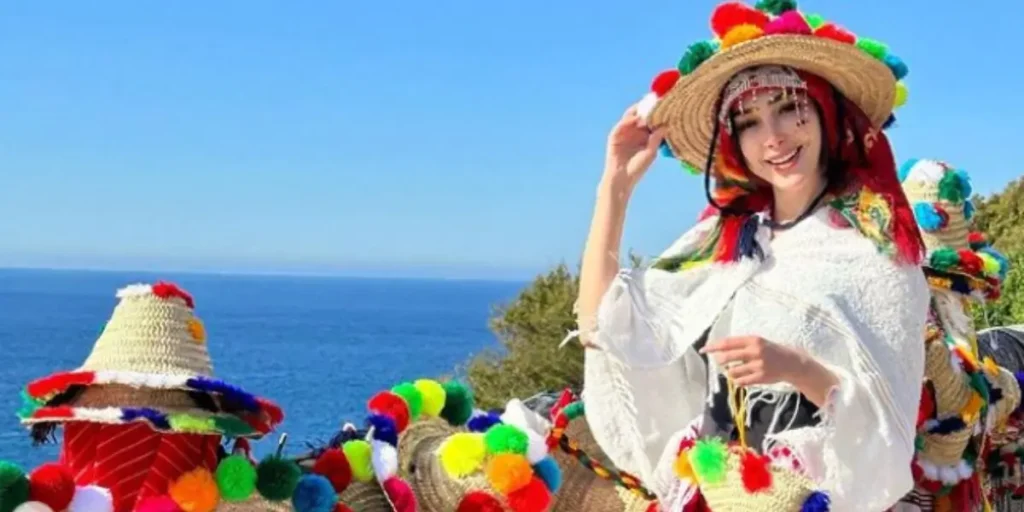
Along Morocco’s northern coast, in cities like Tangier and Tetouan, you can clearly see the influence of Mediterranean cultures—particularly Spanish and Turkish—in both everyday and ceremonial clothing.
Women’s garments in this region often feature light, breezy fabrics and vibrant colors that reflect the seaside environment. The embroidery techniques used here show clear Andalusian influences, with floral motifs and arabesques predominating. I was particularly struck by the wedding garments in Tetouan, which include a distinctive outfit called the “keswa el kbira” (the grand costume)—a multi-layered ensemble that includes an embroidered velvet caftan, ornate belt, and a crown-like headdress that transforms the bride into a living embodiment of regional heritage.
Men’s clothing in coastal cities tends to be more European-influenced than in other parts of Morocco, though traditional garments are still worn for religious occasions and celebrations.
Southern Desert Attire: Practical Beauty
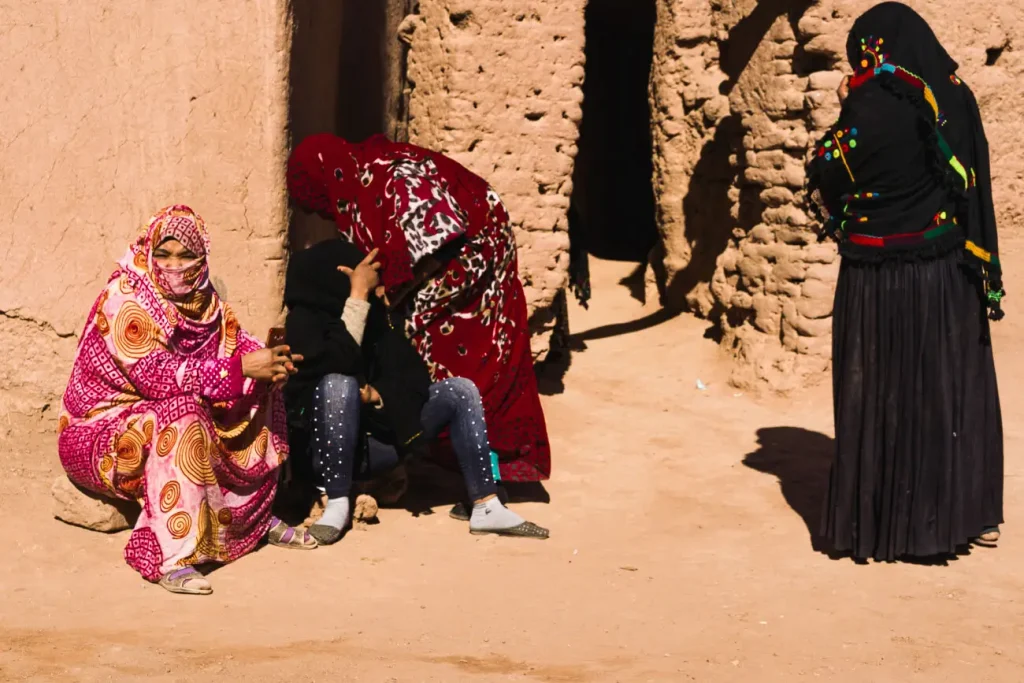
Travel south toward the Sahara, and you’ll find fashion dramatically adapted to one of Earth’s most challenging environments. In cities like Ouarzazate and Zagora, and among nomadic tribes, clothing prioritizes protection from sun, sand, and dramatic temperature fluctuations.
The indigo blue turbans worn by Tuareg men (sometimes called “blue men of the desert” because the dye sometimes transfers to their skin) are not just striking fashion statements—they serve as essential protection from blowing sand and harsh sunlight. These turbans can reach up to 10 meters in length when unwrapped!
Women in the desert regions often wear layered garments with distinctive geometric embroidery and incorporate silver jewelry that not only serves as portable wealth but is believed to offer spiritual protection. The fabrics here tend to be sturdier, and the color palette draws inspiration from the dramatic desert landscape—deep blues, earthy reds, and sun-bleached neutrals.
Mountain Regions: Distinctive Berber Fashion Elements
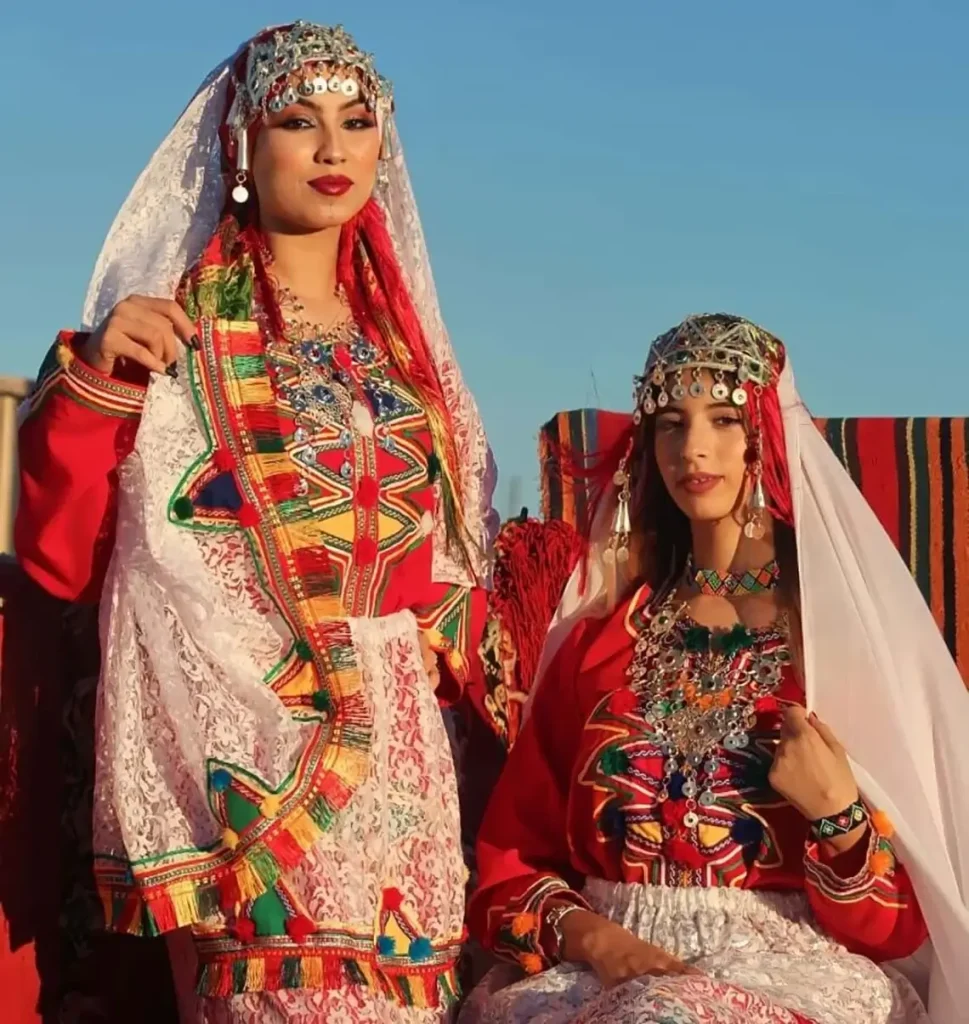
The mountainous regions of Morocco—including the Atlas and Rif ranges—are where Berber traditions remain most vibrant and least influenced by outside cultures. Here, women’s clothing becomes a canvas for personal expression and tribal identity.
In Berber villages across the Middle Atlas, I noticed women wearing distinctive striped aprons over their dresses, with patterns indicating their marital status and tribal affiliation. Hand-woven textiles are still the norm here, rather than factory-produced fabrics found in urban areas.
Wool features prominently in mountain attire due to the cooler climate. The handira (wedding blanket) is perhaps the most famous textile from this region—a handwoven blanket adorned with sequins and metal discs that create a gentle tinkling sound as the wearer moves. Traditionally worn by Berber brides on their wedding day for both warmth and blessing, these stunning textiles have now become sought-after decorative pieces worldwide.
“In Morocco, a garment is never just a garment—it’s a geographical map, a family history, and a spiritual talisman all woven into one.” — Moroccan fashion historian
The Craftsmanship and Evolution of Moroccan Fashion
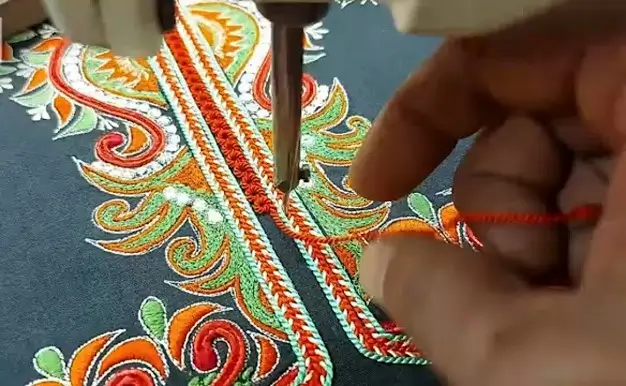
Materials and Craftsmanship in Moroccan Fashion
What truly sets Moroccan fashion apart is the extraordinary level of craftsmanship that goes into creating even everyday garments. Unlike mass-produced fast fashion, traditional Moroccan clothing represents countless hours of skilled handwork passed down through generations.
Silk, Cotton, and Wool: The Foundations of Moroccan Textiles
The quality of materials used in Moroccan garments reflects the country’s historical position as a trading crossroads. Silk—originally imported along ancient trade routes from as far away as China—became the material of choice for luxury garments worn by the royal court and wealthy merchants. In Fez, I visited workshops where silk threads are still dyed using traditional methods, creating the vibrant colors that make Moroccan textiles so immediately recognizable.
Cotton has long been grown in Morocco’s agricultural regions and forms the backbone of everyday clothing. Its breathability makes it ideal for the hot climate, while its versatility allows it to be transformed through embroidery and dyeing techniques. A cotton djellaba might be simple in form, but the handwork that adorns it can elevate it to a work of art.
Wool holds special significance in Morocco’s mountain regions, where sheep herding has been practiced for millennia. The wool from these hardy mountain sheep produces textiles of exceptional warmth and durability. Have you ever wrapped yourself in a handwoven Berber blanket? If so, you’ll know what I mean when I say there’s something almost magical about their weight and texture—they seem to carry the essence of the mountains within their fibers.
What amazed me during my textile explorations was learning about natural dyeing processes that are still practiced today. In Marrakech, I watched artisans using:
- Indigo leaves for deep blues
- Pomegranate rinds for yellows
- Cochineal insects for vibrant reds
- Henna leaves for oranges and browns
- Walnut shells for rich earth tones
These natural dyes create colors with a depth and subtlety that synthetic alternatives simply cannot match.
The Art of Moroccan Leather Working
No discussion of Moroccan fashion materials would be complete without mentioning leather. Since ancient times, the tanneries of Fez have been producing some of the world’s finest leather using techniques that have remained largely unchanged for centuries.
The famous Chouara Tannery in Fez is a sensory experience you won’t soon forget (particularly the smell!). There, leather is processed in large stone vessels filled with natural tanning agents and dyes. Men wade waist-deep in these colorful pools, working the hides by hand in a process that takes weeks to complete.
This traditionally processed leather becomes the raw material for an astonishing array of fashion items—from the iconic babouche slippers with their pointed toes and soft soles to ornate belts, bags, and decorative elements for garments. The finest pieces use a technique called leather embroidery, where colored threads create raised patterns on leather surfaces—a distinctively Moroccan craft that requires years to master.
Modern Moroccan Fashion: Traditional Roots with Global Appeal
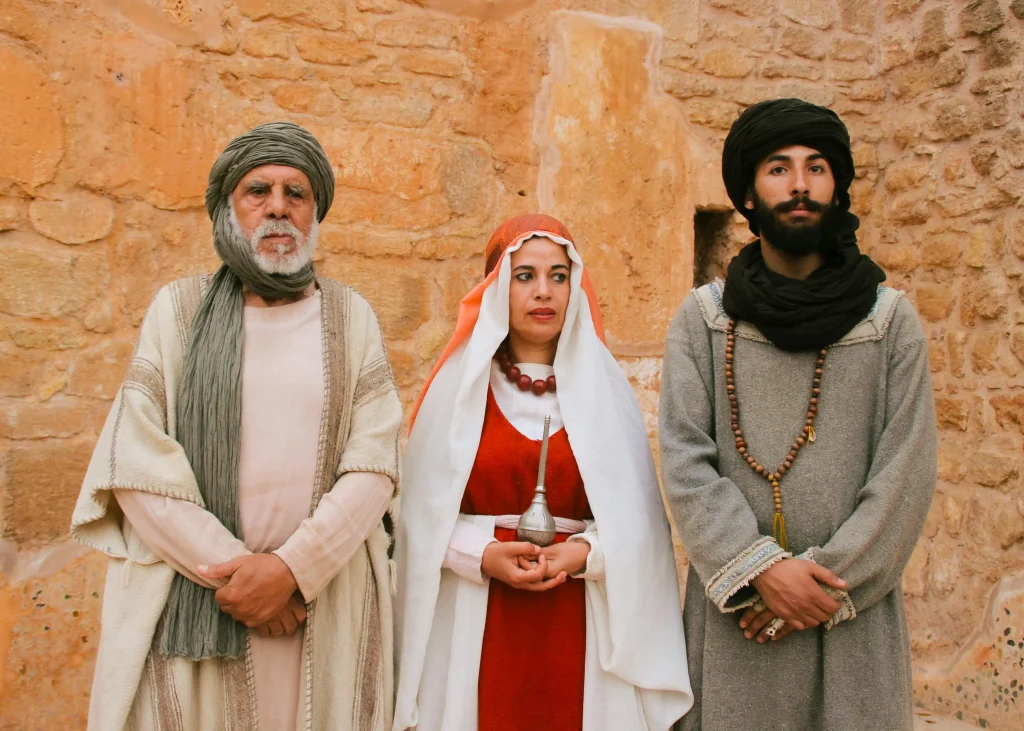
While traditional garments remain central to Moroccan identity, the country’s fashion scene is far from stuck in the past. Today’s Moroccan designers are creating exciting new interpretations that honor heritage while speaking to contemporary global sensibilities.
Contemporary Moroccan Designers Making Global Waves
A new generation of Moroccan designers is gaining international recognition by reinterpreting traditional elements for modern consumers. These designers are creating bridges between Morocco’s rich textile heritage and contemporary global fashion trends.
Zhor Raïs was one of the first to modernize the caftan, creating more streamlined silhouettes that maintain traditional embellishment techniques. Her work has been instrumental in bringing Moroccan aesthetics to international audiences while ensuring the preservation of authentic craftsmanship.
Younger designers like Artsi Ifrach (Art/C) create bold, avant-garde pieces that incorporate vintage Moroccan textiles into thoroughly modern silhouettes. His work challenges conventions while celebrating the extraordinary handcraft traditions that make Moroccan textiles so special.
During Casablanca’s Fashion Week, I was struck by how designers like Amine Bendriouich blend streetwear sensibilities with traditional Moroccan elements—think hoodies with hand-embroidered details or sneakers adorned with leather work techniques usually reserved for babouche slippers. These innovative fusions are creating entirely new fashion languages that resonate with younger Moroccans and international fashion enthusiasts alike.
How Traditional Elements Are Being Reimagined Today
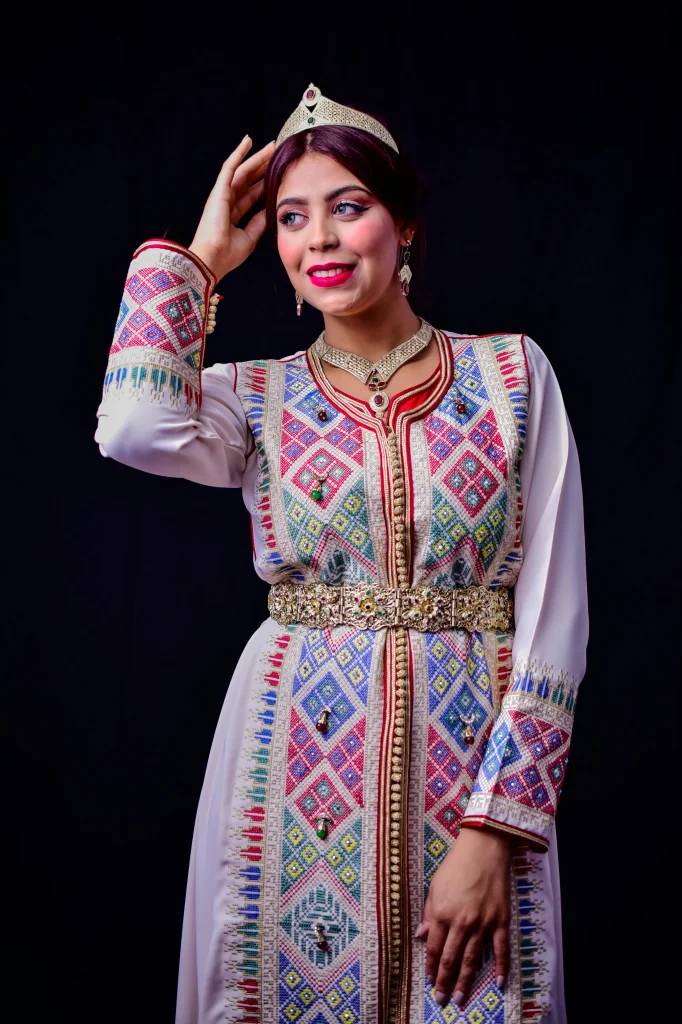
What’s particularly exciting about contemporary Moroccan fashion is how traditional elements are finding new contexts and applications:
- Modern Caftans: Today’s caftans often feature cleaner lines, lighter fabrics, and more versatile styling options while maintaining traditional embellishment techniques. Modern brides might choose a caftan with a slimmer cut that allows for easier movement while dancing.
- Sustainable Approaches: Young designers are reviving natural dyeing techniques and traditional zero-waste cutting methods as part of a commitment to environmental sustainability—proving that sometimes ancient wisdom offers solutions to modern problems.
- Cross-Cultural Fusion: Elements of traditional Moroccan garments are being incorporated into Western wardrobe staples—embroidery techniques traditionally used on djellabas might now adorn denim jackets, while caftan-inspired evening gowns appear on international red carpets.
This evolution isn’t just happening on designer runways—it’s visible in the streets of Rabat and Casablanca, where young people create their own personal style fusions. I’ve seen university students pairing traditional hand-embroidered belts with jeans and t-shirts, creating looks that honor their heritage while expressing contemporary identities.
Moroccan Fashion Accessories That Complete the Look
If garments are the foundation of Moroccan fashion, accessories are what truly complete the story. These finishing touches often carry deep cultural significance while adding visual interest and personal expression to an outfit.
Jewelry Traditions: Silver, Amber, and Coral
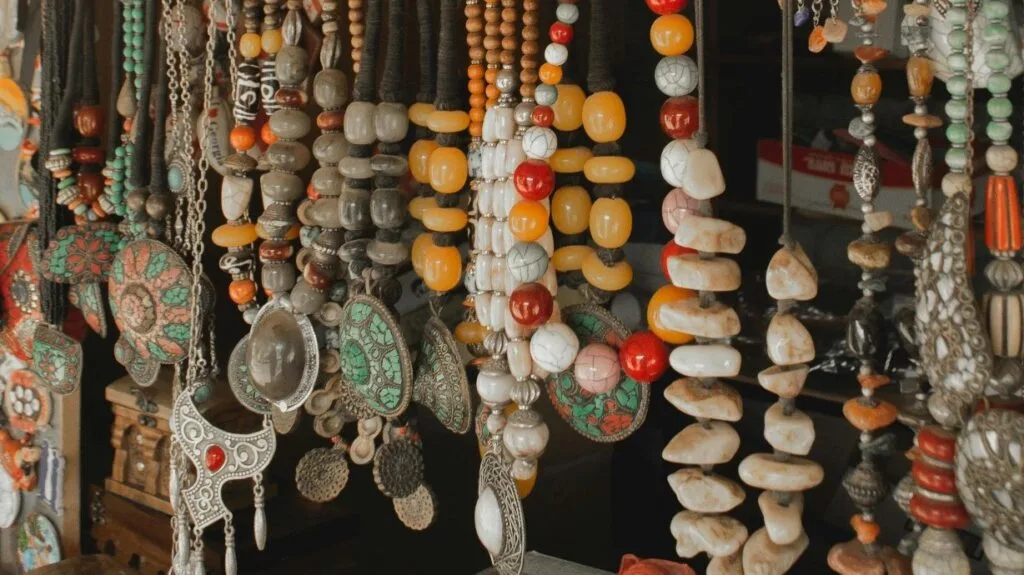
Moroccan jewelry is a universe unto itself, with distinct regional traditions and symbolic meanings. Among Berber communities, silver jewelry has traditionally been much more than decoration—it serves as both family wealth and spiritual protection.
The distinctive large silver fibula (ornate pins used to secure garments) found in the Middle Atlas feature geometric designs that tell stories about family lineage and tribal affiliation. In the south, elaborate silver and amber necklaces called “tagmoute” might feature coral, amber, and coin pendants—each element selected not just for beauty but for the protection it’s believed to offer.
What I find fascinating about traditional Moroccan jewelry is its substantial nature—these aren’t delicate, barely-there pieces but bold statements meant to be seen and heard. Many traditional pieces incorporate elements that create gentle tinkling sounds as the wearer moves, adding an auditory dimension to their visual impact.
Contemporary Moroccan jewelers are now creating pieces that honor these traditions while using modern techniques and sometimes non-traditional materials. In Marrakech’s Gueliz district, I discovered studios where designers create sterling silver pieces inspired by traditional forms but simplified for everyday wear.
Leather Goods: From Babouche Slippers to Handcrafted Bags
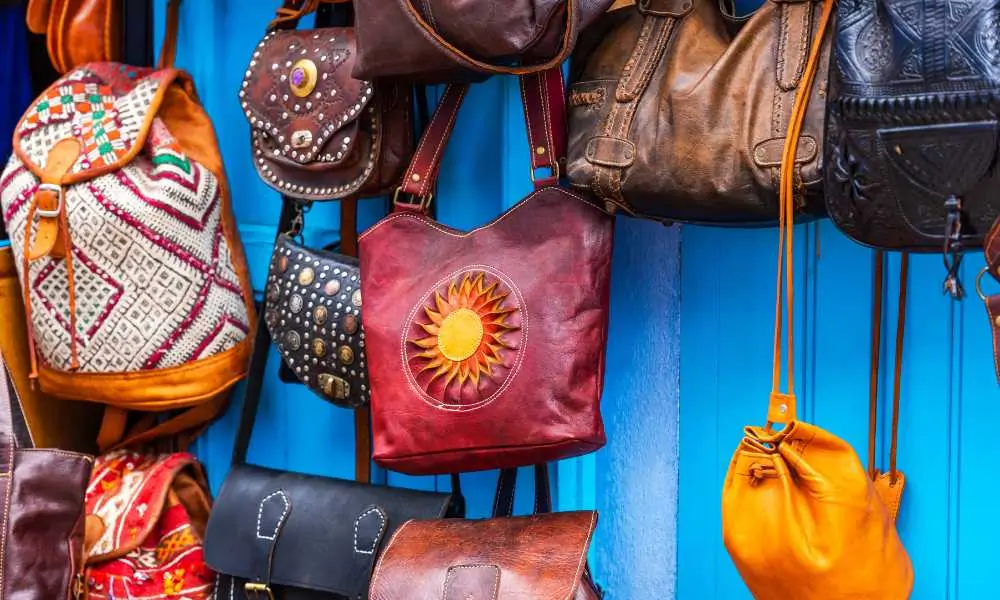
Perhaps the most instantly recognizable Moroccan fashion accessory is the babouche—those distinctive leather slippers with pointed toes and backs traditionally folded down for easy slipping on and off. Available in every color imaginable and adorned with embroidery, sequins, or metallic thread, babouches range from simple everyday versions to elaborate wedding pairs that might be completely covered in silk embroidery.
Beyond footwear, leather working traditions produce an array of fashion accessories:
- Belts: Traditional Moroccan belts made from supple leather and often adorned with silk embroidery or metalwork are experiencing a renaissance in contemporary fashion.
- Bags: From practical market totes to elaborate evening clutches, Moroccan leather bags combine durability with distinctive aesthetic appeal.
- Decorative Elements: Leather cording and appliqué work often embellish garments, creating textural interest and structural support.
What makes these leather accessories special is the vegetable tanning process that creates supple, long-lasting leather with rich patina development over time. Unlike chrome-tanned leather used in most mass-produced accessories, traditionally tanned Moroccan leather ages beautifully, developing character with use.
How to Incorporate Moroccan Fashion Elements into Western Wardrobes
You don’t need to wear a full caftan to bring Moroccan fashion into your everyday life. The beauty of Moroccan style elements is how easily they can integrate into existing wardrobes, adding color, texture, and cultural richness.
Everyday Moroccan-Inspired Styling Tips
Here are some accessible ways to incorporate Moroccan fashion elements into your daily wardrobe:
- Layer with a lightweight silk scarf featuring Moroccan-inspired patterns. The way you drape and tie it can transform a simple outfit into something with distinctive character.
- Add a pair of babouche slippers to your shoe collection—they’re surprisingly versatile and comfortable for daily wear.
- Incorporate embroidered details through accessories like belts or small handbags that feature traditional Moroccan needlework.
- Experiment with color combinations inspired by Moroccan textiles—try pairing deep indigo with saffron yellow or coral with turquoise for unexpected yet harmonious results.
- Consider silhouettes inspired by traditional garments—wide-legged pants reminiscent of traditional serwal (loose trousers worn under djellabas) are both comfortable and on-trend.
During my last trip to Morocco, I purchased a simple white cotton tunic with subtle blue embroidery around the neckline—a piece inspired by traditional men’s shirts but adapted to contemporary proportions. It’s become one of my most versatile garments, equally at home paired with jeans for casual days or dressed up with accessories for evening events.
Statement Pieces That Celebrate Moroccan Craftsmanship
For those ready to make a bolder statement, consider investing in signature pieces that showcase exceptional Moroccan craftsmanship:
- A modern interpretation of a caftan makes for a showstopping special occasion piece that stands apart from standard evening wear options.
- Hand-embroidered leather bags combine practicality with artistic expression—and often improve with age as the leather develops patina.
- Traditional Berber silver jewelry creates a distinctive look when paired with simple, contemporary clothing—the contrast between ancient design and modern simplicity creates visual interest.
These statement pieces not only add unique elements to your wardrobe but also support traditional craftspeople and help preserve centuries-old techniques that might otherwise be lost in our era of mass production.
“Fashion is architecture: it is a matter of proportions. But Moroccan fashion adds poetry to those proportions—it celebrates the human touch in an increasingly mechanical world.” — Observed during my conversation with a master tailor in the Fez medina
Sustainable Heritage and Practical Information
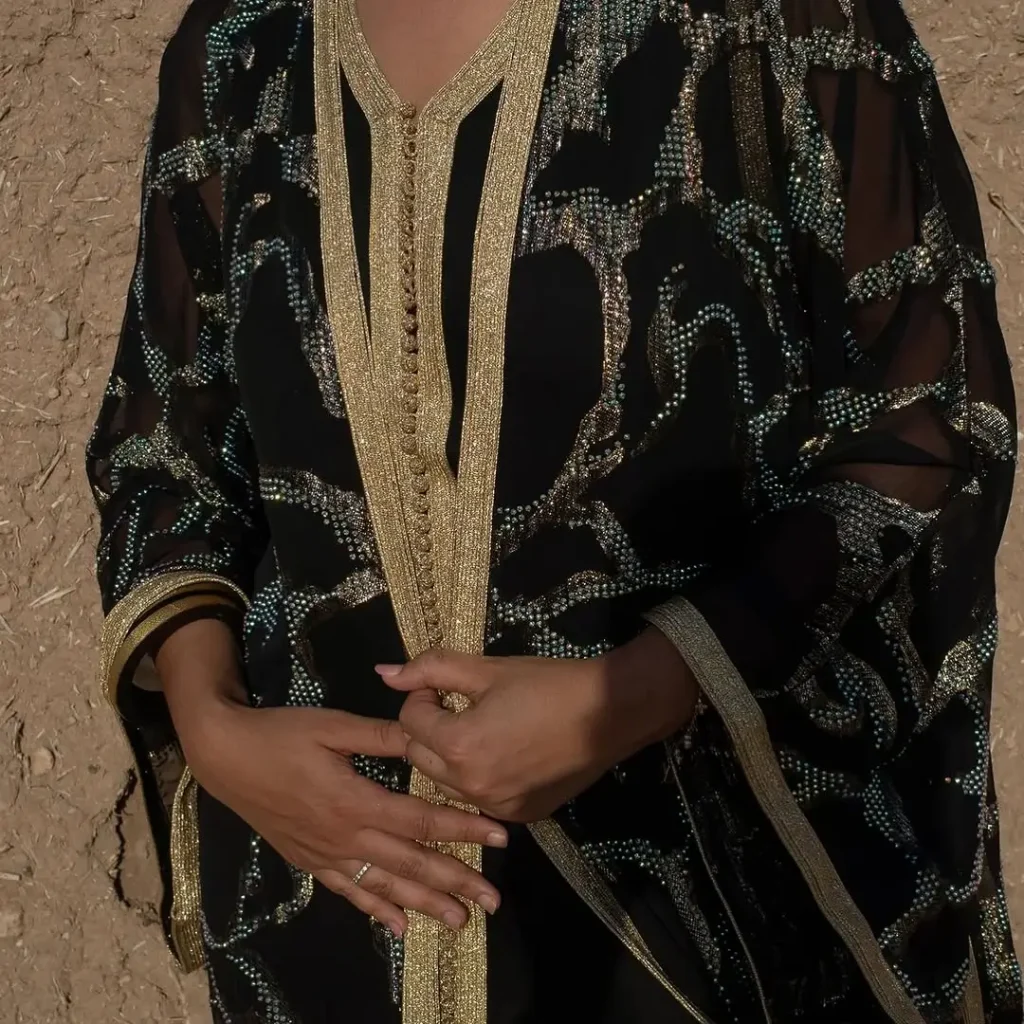
Sustainable Aspects of Traditional Moroccan Fashion
In our era of fast fashion and environmental concerns, traditional Moroccan garment-making offers valuable lessons in sustainability that were practiced long before “sustainability” became a buzzword.
Artisanal Practices and Their Environmental Benefits
When I first visited a traditional weaving cooperative in the Atlas Mountains, I was struck by how inherently sustainable the entire process was. Nothing was wasted—scraps of fabric became patches, decorative elements, or were even recycled into new thread. This zero-waste approach wasn’t a marketing strategy but a deeply ingrained cultural value system where resources were respected.
Traditional Moroccan textile production reflects principles that modern sustainable fashion is only now rediscovering:
- Longevity over disposability: Traditional garments are designed to last for decades or even generations. A well-made caftan might be worn by a mother, altered for her daughter, and eventually repurposed into other garments or household items.
- Natural, biodegradable materials: The predominant use of natural fibers like wool, cotton, and silk means garments eventually return to the earth without leaving synthetic residues.
- Local production chains: Traditional Moroccan fashion involves remarkably short supply chains—often from local sheep to spinners, weavers, dyers, and tailors all within the same community.
- Natural dyeing techniques: Plant-based dyes don’t release toxic chemicals into waterways, unlike many synthetic alternatives used in mass-market fashion.
I visited a women’s cooperative near Ouarzazate where they were reviving indigo dyeing using traditional fermentation vats. The process was slow and labor-intensive but produced colors of extraordinary depth while generating only compostable waste. The master dyer told me, “When my grandmother dyed fabric, the water could be returned to the garden afterward. This is how we must think again.”
Ethical Shopping: Supporting Moroccan Craftspeople
One of the most direct ways to support sustainable Moroccan fashion is by making thoughtful purchasing decisions that value craftsmanship and fair compensation.
When shopping for Moroccan fashion items, consider these ethical approaches:
- Seek direct relationships with artisans: Whenever possible, buy directly from makers or through cooperatives where more of your money reaches the actual craftspeople.
- Ask questions about production: Don’t hesitate to ask about how items are made, who made them, and under what conditions.
- Value appropriate pricing: Extraordinarily low prices often indicate corners being cut, whether in material quality or fair labor practices. A hand-embroidered piece priced the same as mass-produced fashion should raise questions.
- Look for certification: Organizations like the Moroccan National Handicraft Development Corporation work to certify authentic, ethically produced crafts.
During my visits to Morocco, I’ve seen firsthand how tourism can either support or undermine traditional crafts. When visitors seek “bargains” at all costs, they inadvertently pressure artisans to cut corners on quality. Conversely, when customers show genuine interest in techniques and materials and are willing to pay fair prices, they help preserve living traditions that might otherwise disappear.
Where to Shop for Authentic Moroccan Fashion
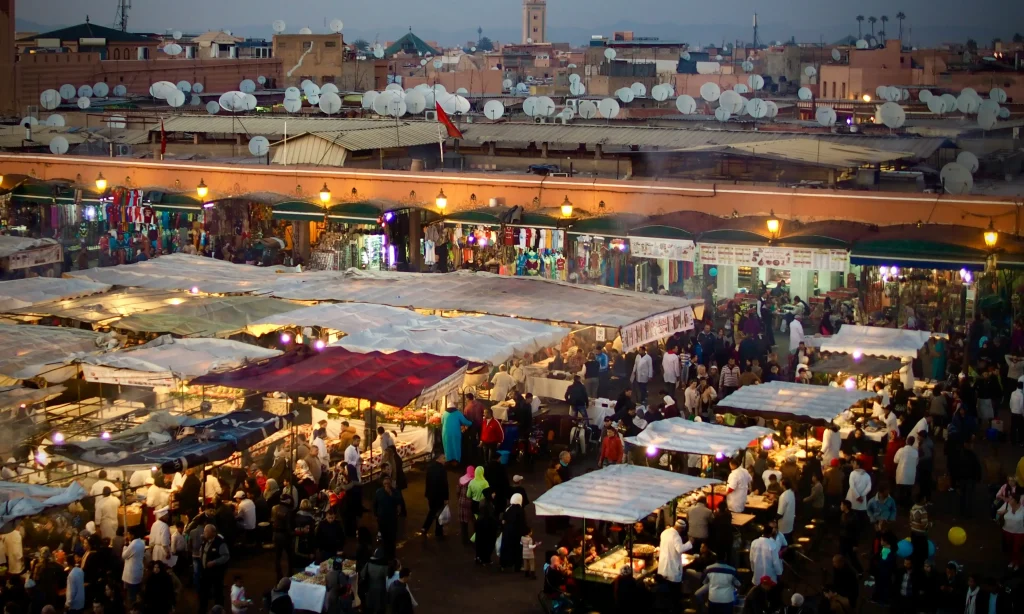
Whether you’re planning a trip to Morocco or looking to shop online from home, knowing where to find authentic pieces makes all the difference in both the quality of what you purchase and the impact of your spending.
Must-Visit Markets in Morocco for Fashion Enthusiasts
If you’re lucky enough to visit Morocco, these markets (souks) offer some of the best shopping experiences for fashion items:
Fez Medina: The ancient medina of Fez remains the epicenter of traditional Moroccan craftsmanship. The narrow streets around Ain Azliten house some of Morocco’s finest embroiderers and caftan makers. Look for the street of the “kissaria” (textile merchants) to find exceptional fabrics.
Marrakech’s Souk Semmarine: This labyrinthine marketplace is overwhelming but rewarding. For quality over tourist trinkets, venture deeper into the souk areas specializing in textiles and leatherwork. The shops around Rue Dar el Bacha often feature higher-end pieces.
Rabat’s Rue des Consuls: This historic street in Rabat’s old medina is known for textiles and traditional garments of exceptional quality. The nearby Oudayas Craft Museum shop offers certified authentic pieces at fixed prices.
Tangier’s Grand Socco: The shops surrounding this plaza offer interesting fusion pieces that reflect Tangier’s position between Africa and Europe. Look for vendors specializing in embroidery from Northern Morocco’s distinctive traditions.
Pro shopping tips I’ve learned from my Moroccan adventures:
- Shop in the morning when vendors are fresh and less busy
- Express genuine interest in craftsmanship before discussing prices
- Be prepared to bargain respectfully, but remember that quality work deserves fair compensation
- Bring cash (dirhams) as many smaller shops don’t accept cards
| Market | Location | Specialties | Best Time to Visit |
|---|---|---|---|
| Fez Medina | Fez | Caftans, embroidery, luxury textiles | Weekday mornings |
| Souk Semmarine | Marrakech | Leather goods, ready-to-wear | Before 11am or after 4pm |
| Rue des Consuls | Rabat | High-quality traditional garments | Tuesday-Thursday mornings |
| Grand Socco | Tangier | Contemporary-traditional fusion | Weekday afternoons |
Reliable Online Sources for Moroccan Fashion
Can’t make it to Morocco? These online resources offer authentic Moroccan fashion items:
- Abury Collection: Partners directly with Moroccan artisans to create contemporary pieces using traditional techniques.
- Muzungu Sisters: Features ethically sourced caftans and embroidered pieces from various Moroccan cooperatives.
- Artisan Project: Offers a range of Moroccan textiles and fashion accessories with transparent sourcing information.
- Max & Jan: A Marrakech-based brand that creates contemporary fashion with traditional Moroccan elements.
- El Fenn Boutique: The online shop of this famous Marrakech riad features carefully curated Moroccan fashion items.
When shopping online, look for detailed information about sourcing and production methods. Authentic pieces will typically acknowledge specific regional traditions or artisan groups rather than using vague terms like “ethnic” or “tribal.”
Frequently Asked Questions About Moroccan Fashion
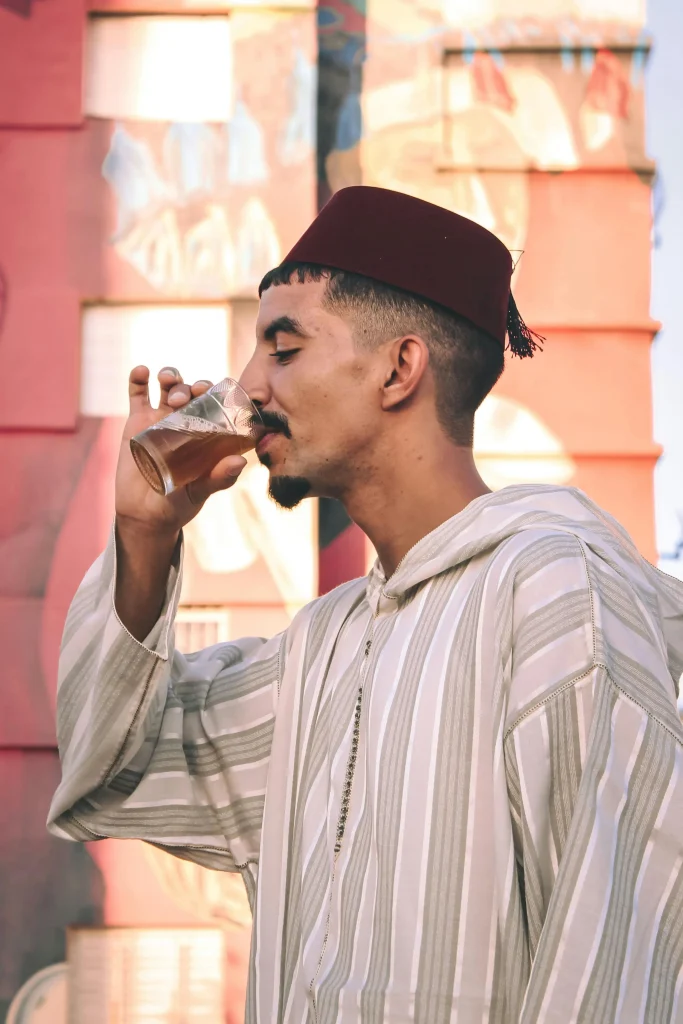
What makes Moroccan caftans different from other traditional robes?
Moroccan caftans stand out for their extraordinarily detailed handwork and the specific embellishment techniques used. Unlike similar garments from other regions, authentic Moroccan caftans typically feature passementerie (ornamental trimming) created with techniques like “sfifa” (flat silk cording) and “akaad” (hand-twisted button knots). The cut of Moroccan caftans also tends to be more fitted at the bodice with precise side slits, compared to the looser styles found elsewhere in the Middle East.
Another distinctive feature is the layering tradition—formal Moroccan caftans are often worn with a lightweight silk shirt called a “dfina” underneath. For ceremonial occasions, they’re paired with a specific hand-embroidered belt called an “mdamma” that cinches the waist. It’s this combination of elements that creates the distinctive Moroccan silhouette.
Are traditional Moroccan fashion items always handmade?
While the finest Moroccan garments remain entirely handmade, there’s now a spectrum of production methods. Truly traditional pieces—particularly those made for special occasions like weddings—are still created entirely by hand, from thread-spinning to final embellishment. These represent the highest level of craftsmanship and are priced accordingly.
However, many contemporary Moroccan fashion items combine hand and machine techniques. For example, a modern caftan might be machine-sewn for the main seams but hand-embroidered for decorative elements. This hybrid approach helps keep traditions alive while creating more accessible price points.
Unfortunately, the market also includes mass-produced items that merely imitate traditional Moroccan styles without using authentic techniques. These can be identified by their uniform appearance, synthetic materials, and unusually low prices.
How can I tell if I’m buying authentic Moroccan fashion pieces?
Authentic Moroccan fashion items have several tell-tale characteristics:
- Irregularity as evidence of handwork: Look for the subtle variations that indicate human hands rather than machines—slightly uneven stitches or minor asymmetry in patterns.
- Quality of materials: Authentic pieces use natural fibers that feel substantial and improve with age.
- Construction details: Turn garments inside out to examine seam finishes and lining—quality pieces are typically as beautifully finished inside as outside.
- Natural dyes: Traditional natural dyes have a depth and subtle variation that synthetic alternatives lack.
- Weight and drape: Traditional Moroccan textiles often have distinctive weight and movement characteristics—silk brocades feel substantial, while even lightweight cotton has a particular crispness when traditionally woven.
The best guarantee of authenticity is building relationships with reputable sellers who can tell you specifically who made an item and where.
What are the most important cultural symbols used in Moroccan fashion?
Moroccan textiles and garments often incorporate symbols with deep cultural significance:
- The Hand of Fatima (Khamsa): This protective symbol appears in embroidery and jewelry, believed to ward off evil.
- Geometric patterns: Eight-pointed stars and intricate geometric designs reflect Islamic artistic traditions and often represent cosmic harmony.
- Berber symbols: Angular motifs representing mountains, fertility, protection from evil eye, and tribal identity are common in Berber weaving and embroidery.
- Floral motifs: Stylized flowers and plants, particularly in Fez embroidery, often represent paradise and abundance.
These symbols aren’t merely decorative—they connect the wearer to cultural heritage and sometimes provide spiritual protection. When I asked an elderly embroiderer in Fez about the meaning of certain patterns, she told me, “When you wear these symbols, you carry your ancestors’ wisdom and protection with you.”
Conclusion: Embracing the Timeless Allure of Moroccan Style
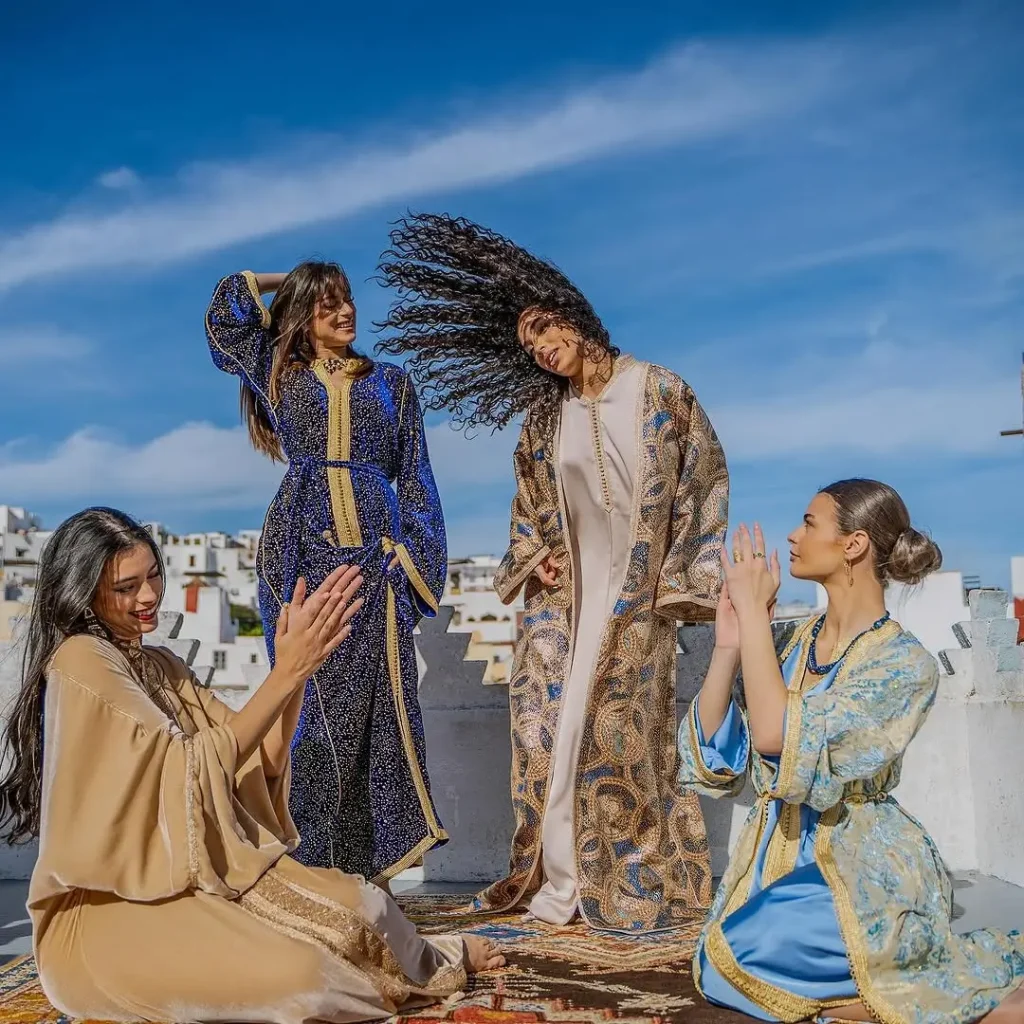
As our global fashion industry grapples with questions of sustainability, cultural appreciation, and the value of handcraft, Moroccan fashion offers powerful inspiration. Here is a tradition that has never lost touch with its roots yet continuously evolves—proving that honoring heritage doesn’t mean being trapped in the past.
What makes Moroccan fashion so relevant today is precisely this balance between tradition and innovation. The techniques developed over centuries create garments of extraordinary beauty and durability, while contemporary interpretations ensure these traditions remain living cultural expressions rather than museum pieces.
My own journey through Moroccan fashion has taught me to value the human connection behind clothing—to see garments not just as things to wear but as embodiments of cultural knowledge, artistic expression, and community identity. When I wear my hand-embroidered belt from the Atlas Mountains or my babouche slippers from Marrakech, I’m not just making a fashion statement but participating in a tradition that stretches back through countless generations.
Whether you’re planning a Moroccan adventure with shopping in mind or simply looking to incorporate some North African flair into your existing wardrobe, I hope this exploration inspires you to look beyond fast fashion toward pieces with deeper meaning and connection. In a world of disposable trends, Moroccan fashion offers something increasingly precious—authenticity, craftsmanship, and a tangible link to cultural heritage that never goes out of style.
After all, true style isn’t about following fleeting trends but about expressing personal values and connections. And in that sense, Moroccan fashion—with its celebration of handcraft, sustainability, and cultural continuity—might just be the most modern fashion statement you can make.
Shop Traditional Moroccan Fashion & Explore Morocco with Our Tours
If any of the traditional Moroccan clothing items we’ve mentioned caught your eye, we’re excited to offer them at affordable prices! Feel free to reach out to us for more details or to make a purchase.
Additionally, if you’re looking to explore the beautiful and rich culture of Morocco firsthand, we offer amazing Moroccan tours that will give you a chance to experience the country like never before. Contact us today to book your next adventure!
